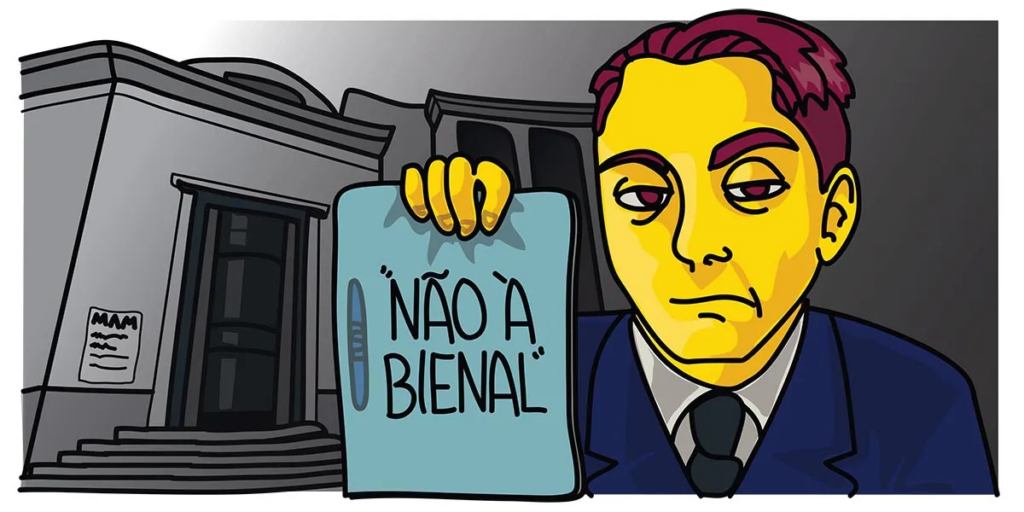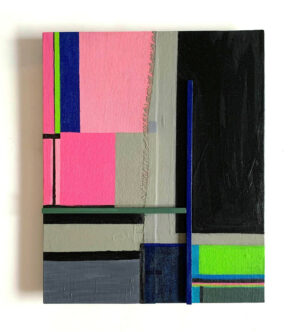Brazilian military intervention: The art during this time

What do you think about people asking for military intervention? If we imagine that a person has never heard about the Brazilian military dictatorship, we can contextualize it and present some artistic manifestations of the time to justify why an idea like that is simply unfeasible.
On March 31, 1964, a military coup with the support of far-right groups overthrew João Goulart from the presidency and began the dictatorship of the Brazilian Armed Forces. The roots of the military coup predate this date and its scars still reveals itself through time.
At that time, the State repressed and censored artistic manifestations, directly affecting artists who incorporated cultural and political criticism in their experiments. Before the coup, for example, the theater sought government support to bring the public to the stage. After the coup, the stages were destroyed.
In the 1950s, with Concretism and the construction of Brasília, national art was optimistic about the country’s development. Already in the 60s, the watchword had to be transgression. Therefor, the repressions and surveillances caused recurrent signs of dissatisfaction in the Brazilian social daily life. Thus, art became an instrument of political contestation against the military regime, not only denouncing nonconformity in relation to authoritarianism, but also taking advantage of artistic changes around the world.

Artists of this generation appropriated the language of mass communication to encourage spectator participation, but also instigate reflection and debate rather than simple contemplation. Therefore, participatory works not only replaced individual contemplation with protest, denunciation and collective public participation, besides questioning the fine arts system and the authoritarian state after the 1964 coup.
Obras em Destaque
This politicized cultural effervescence that was gaining more and more space was muffled with the establishment of Institutional Act n°5. In other words, if there was already repression and violence from the first moments of the coup, the AI-5 served to increase this restriction.
From the military’s perspective, their forced political project was necessary to establish order and rid the country of subversive communist threats. They saw themselves in charge of taking Brazil to a new economic, political and moral reality through a “civilizing mission”. Thus, the State not only repressed and controlled the Brazilian cultural scene, but also promoted a “beautifying” nationalism, forging an ideological national identity that concealed the political crimes.
Meanwhile, avant-garde artists spread a critical nationalism by denouncing authoritarianism and exposing Brazil’s Third World condition. The resistance to dictatorship and the challenge of overcoming the conservatism gave rise to conceptual art, where what mattered was the artist’s concept and interpretation of reality. Therefore, artistic languages beyond traditional painting and sculpture were experimented.
The work “Tropicália”, by Helio Oiticica, is an example of the contesting aesthetics of the period, which even gave rise to the cultural movement called tropicalismo.

In addition, musicians such as Gilberto Gil, Chico Buarque, among others, needed a lot of creativity to circumvent censorship. Brazilian popular music, by creating metaphors, changing names and using euphemisms, acquired an increasing social content when singing about the thoughts of those who fought for more freedom.
However, while repression stimulated the creativity, it also gradually smothered the artists. Another example of artistic resistance at the time was the international boycott against the X Bienal de São Paulo in 1969. Spearheaded by the art critic Mário Pedrosa, when he was president of the Brazilian Association of Art Critics (ABCA), the reaction against the arbitrariness committed by the political power during the years of dictatorship was due to a note of repudiation of the government’s act of denying the free exercise of the creation of the work of art and of the art critics, and consequently, suspending the Brazilian presence in the VI Bienal of the Youth in Paris.
The ban on sending works to the Bienal de Paris was due to the content of works that protested against the regime and affronted the “moral conduct” encouraged by the military. However, the witness statements and the documents prove the existence of the censorship of artistic activity in Brazil. This brought together 321 foreign artists and intellectuals at the Museum of Modern Art in Paris to sign the manifesto “No to the Bienal”.
Thus, in the more than twenty years of the Brazilian military period, restrictions on critical and artistic freedom did not prevent the development of avant-garde art, on the contrary, it contributed to the erosion of the regime in the face of public opinion. Which does not justify the return of repression, censorship and especially the veiled violence of a military intervention.
There is no room for this history to repeat itself!
There are already many difficulties that an artist has in developing his work in the current Brazilian political and social context. Just look at how many works have already been discarded and even censored recently. In the midst of the multiculturalism in which we live, we often witness radical attitudes against cultural diversity. Establishing in the country a regulatory and oppressive power for a new military intervention will make the dissemination of our artistic manifestations even more difficult.
Text and illustrations: André D.X / Translation: Vinícius Turi.
Read more:
Meet the artists who empowered African culture in Brazil and around the world






